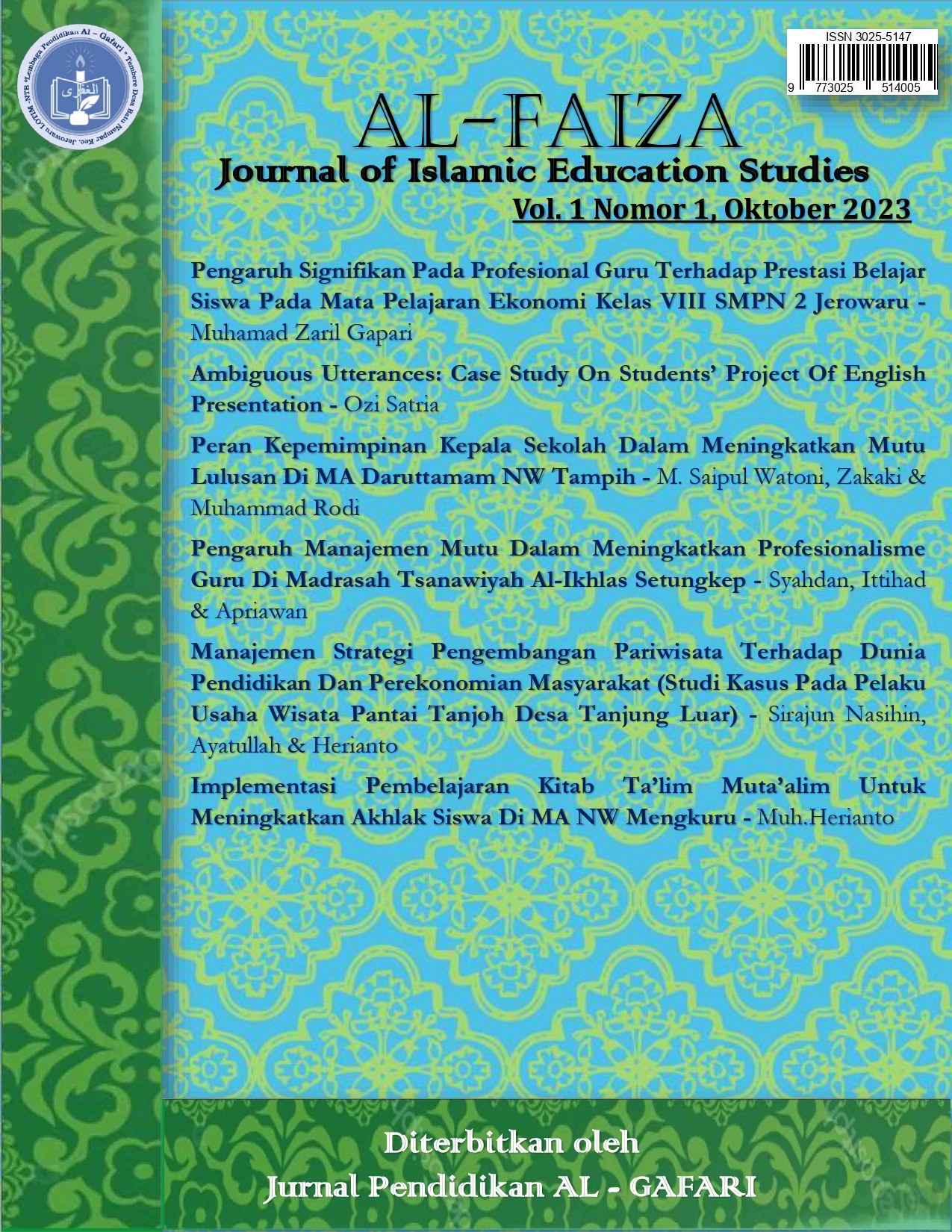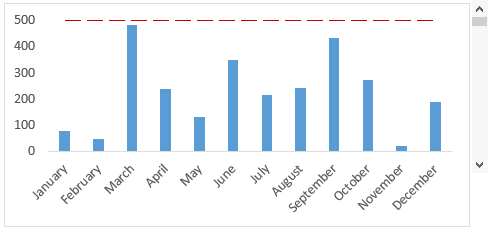Ambiguous Utterances: Case Study On Students’ Project Of English Presentation
Keywords:
Language, Ambiguous utterances, College Students.Abstract
This research purposed to identify the types of ambiguous utterances particularly lexical ambiguity employed by college students on presentation projects of English subjects and to recognize the possible factors which caused the students’ presented ambiguous utterances on their presentation. This research implied descriptive qualitative with a case study approach. In which, the researcher employed observation, interview, and documentation as techniques of data collection. Thence, to analyze the data the researcher used three steps based on Miles and Huberman theory such as, the researcher did data reduction, displayed the data as some categories, and the last step manufactured the conclusion. To answer both research focus the researcher adopted Cruse Laporte theory. From the two types of lexical ambiguity, the researcher only found homonyms such as “I look at the duck” presented by the student “HH”, “We will miss the unique cat” presented by the student “EW”, “One of my friends hold the bat” was employed by the student “JA”, “There was a Kecial bird on my back” was uttered by the student “JU”, “I like this season so much” was uttered by the student “YK”, and the last one was said by the student “IG” it was “I am still young”. These homonyms were caused by some factors they were 2 students felt “No knowledge of English”, 7 students felt “no context comprehension”, 6 students owned “limited vocabulary”, and the last factor was “no knowledge of English structure” explained by 5 students. Those results were significantly described as valuable contributions in relation to providing updated knowledge of ambiguous utterances especially lexical ambiguity employed by the college students on presentation projects of English Subjects.
References
Britton, B. K. (1978). “Methods & Designs Lexical Ambiguity of Words Used in English Text”. Behavior Research & Instrumentation.
Brooks, F. (1987). No Silver Bullet: Essence and Accidents of Software Engineering. IEEE Computer, April, pp. 10-19.
Chomsky, N. (2000). “The Architecture of Language”. Oxford University Press.
Creswell and Jhon, W. (2015). Educational Research: Planning, Conducting, Evaluating, Quantitative, and Qualitative Research (Fourth Edition). United State of America: Pearson Education Inc.
Demir, C. (2020). “Lexical and Structural Ambiguities in Student Writing: An Assessment and Evaluation of Results”. African Educational Research Journal, 8:3:1, DOI:10.30918/AERJ.8S3.20.077
Harmer, H. (2007) The Practice of English Language Teaching Fourth Edition. London: Longman.
Laporte, É. (2001). “Reduction of lexical ambiguity”. Lingvisticae Investigationes, 24:1:67-103.
Mackay, D. G., Bever, T. G. (1967) “In Search of Ambiguity. Perception of Psycholinguistics 2”. http://doi.org/10.3758/BF03213049
Oxford Avanced Learner’s Dictionary.(1995). Oxford: Oxford University Press.
Pramitasih, A. (2012). “A Study on the Ambiguity Found in English Exercises of Vocational School Student’s Exercise Books (Doctoral dissertation”. Universitas Muhammadiyah Surakrta).
Puspitasari, J and Beratha, N. L. S. (2019). “Lexical and Structural Ambiguity Found in Articles in the Jakarta Post Daily Newspaper”. Journal of Arts and Humanities, 23:1, DOI: http://doi.org/10.24843/JH.2019.v23.i01.p04
Rector, M. A., Nehm, R. H., and Pearl, D. (2013). “Learning the language of evolution: lexical ambiguity and word meaning in student explanations”. Research in Science Education, 43(3): 1107-1133
Rodd, J. M., Gaskell, M. G., and Marslen-Wilson,W. D. (2002). “Making sense of semantic ambiguity: Semantic competition in lexical access”. Journal of Memory and Language, 46: 245-266
Stageberg, N. C. (1966). “Structural ambiguity: some sources”. The English Journal, 55(5): 558-563.
Usroh, F. F. (2017). “The Analysis of Ambiguity Sentences in the Students’ English Textbook “Bahasa Inggris SMA/MA/SMK Kelas XI Semester 1” Thesis. English Department Faculty of Teacher Training and Educaional Science Muhammadiyah University of Purworejo.
Wakhidah, N. I (2018). “Study of Ambiguity Found in Students’ English Workbook of Vocational High School”. Skripsi. Department of English Education School of Teacher Training and Education Universitas Muhammadiyah Surakarta.
Wardhaugh, R. (1986). An Introduction to Sociolinguistics. Fifth Edition. Oxford: Blackwell Publishing.















